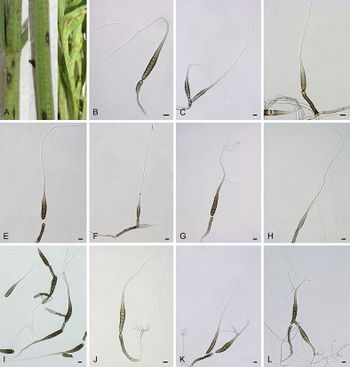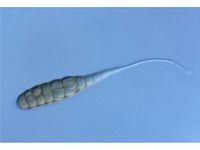Alternaria dauci
| Literature database |
|---|
| 60 articles sorted by: |
| • year (recent ones first) |
| • research topics |
| • countries/regions |
| • host plants |
| • list of antagonists |

Author(s): J.H.C. Woudenberg, M. Truter, J.Z. Groenewald and P.W. Crous
Source: Studies in Mycology, 2014, 79, p. 29
Alternaria dauci (J.G. Kühn) J.W. Groves & Skolko 1944
The fungus is widely distributed and causes an important foliar blight on carrots, especially under cool and humid conditions. It can also infect some other crops. The fungus enters the leaves, causing dark brown to black lesions within 1-2 weeks. The entire top may turn yellow-brown and shrivel. The spores spread easily through the air (e.g. during harvest) or with rain splashes. Between seasons the fungus survives in plant debris, on wild carrots and on seeds. Contaminated seed lots are rejected by growers.
The conidia are club-shaped, dark brown, multi-celled and tapering to a beak which is often much longer than the body. They are around 150-450 µm long (including the beak) and 15-25 µm wide wide. The species belongs to Alternaria sect. Porri.
| Vernacular names | |
|---|---|
| • Deutsch: | Blattbrand der Möhre Möhrenschwärze |
| • English: | foliar blight of carrot |
| • Español: | mancha de la hoja de la zanahoria |
| • Français: | brûlure des feuilles de la carotte |
Synonyms
Alternaria brassicae var. dauci
Alternaria porri f.sp. dauci
For details see the respective page in BugwoodWiki.
- Other images of Alternaria dauci (IPM Images, PaDIL and Studies in Mycology - click to enlarge)



